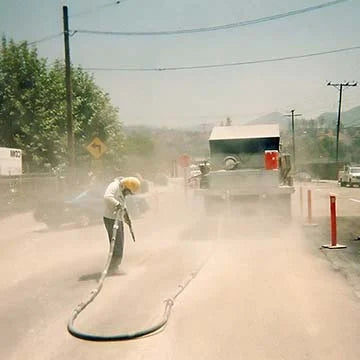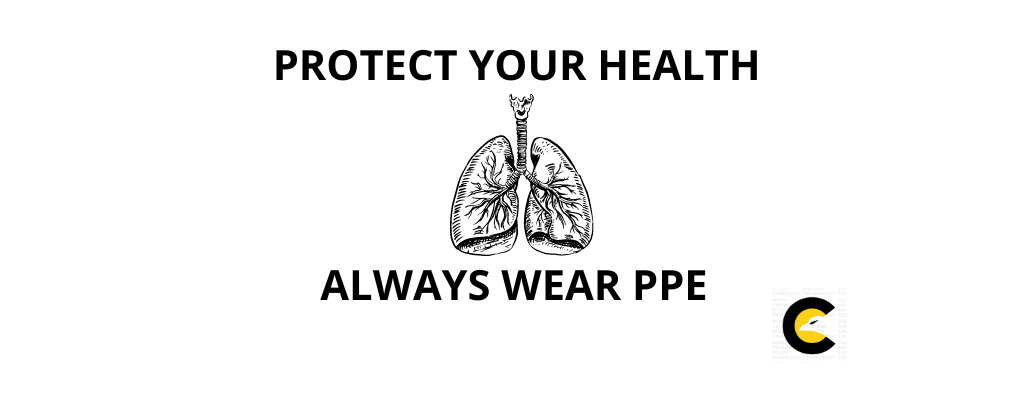WARNING
AVOID USING SILICA SAND FOR BLASTING!
Blasting with silica sand, regardless of the precautions taken, is extremely hazardous and should be strictly avoided.Even if you you are wearing a respirator while blasting with silica sand, it is still extremely dangerous and it might lead to fatal consequences.
Protect your health and safety by choosing safer, approved blasting materials
When engaging in sandblasting, personal safety is of utmost importance. Proper Personal Protective Equipment (PPE) is essential to protect operators from the various hazards associated with sandblasting, such as inhaling dust and abrasive particles, noise, and potential skin injuries. Below are the necessary PPE items that every sandblasting operator must use:
- Full-Face Dust Mask
- Protective Clothing
- Gloves
- Hearing Protection

WHAT IS SILICA SAND?
DANGERS OF SILICA SAND
Silica sand contains crystalline silica, which is highly dangerous when used as an abrasive material. Other materials to avoid include beach sand, river sand, metal refining slags, silicates, and any substances containing heavy metals or biological micro-organisms. Exposure to these can cause severe illnesses or even death. To ensure safety, we recommend using crushed glass, which is environmentally friendly, versatile, and contains less than 1% free silica.

WHY ISN’T SILICA SAFE?
Crystalline silica is a Class 1 Carcinogen, capable of causing cancer. Blasting with silica sand poses fatal risks, as it may also contain other hazardous substances like heavy metals, further increasing health dangers.
THE HEALTH RISKS
Silica sand can seem harmless, but it breaks down into tiny particles that pose severe health threats. Inhaling these particles can cause silicosis, a debilitating lung disease where particles become trapped in the lungs, forming fibrotic nodules. This risk extends beyond workers to anyone exposed to contaminated clothing. Avoiding silica sand is crucial to protect your health and the health of those around you.

SILICOSIS
The silica sand breaks down into small particles and gets into the air we breathe. If workers are breathing these small particles into their lungs, their lungs develop silicosis. Silicosis is a lung condition where the small particles get into the workers lungs, the particles get trapped and start to develop fibroptic nodules.
Workers should also keep in mind that they could contaminate someone second hand by just being around them in their contaminated clothing.
Silicosis is a type of pulmonary fibrosis, a lung disease caused by breathing in tiny bits of silica, a common mineral found in sand, quartz and many other types of rock. Silicosis mainly affects workers exposed to silica dust in jobs such as construction and mining. Over time, exposure to silica particles causes scarring in the lungs, which can harm your ability to breathe.


